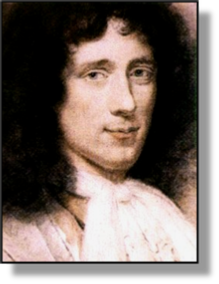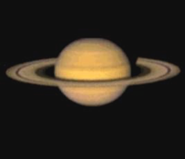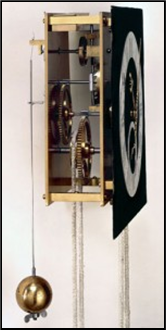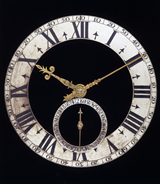


xxxxxThe Dutchman Christiaan Huygens, an outstanding scientist, gained an early reputation as a mathematician with his work of 1654, De Circuli Magnitudine Inventa. In astronomy, having improved the making of lenses, he discovered Titan, and accurately described the rings of Saturn. These and other findings were contained in his Systema Saturnium, published in 1659. A later work, Traité de la lumière of 1678, included his pulse theory of light, and his discovery of the polarization of light. Of practical use was his work on a weight-
CHRISTIAAN HUYGENS 1629 -
Acknowledgement
Huygens: pastel portrait by the Dutch painter Bernard Vaillant (1632-
 xxxxxThe Dutchman Christiaan Huygens, one of the most outstanding scientists of his age, was born at The Hague. His father, Constantijn Huygens, was a well-
xxxxxThe Dutchman Christiaan Huygens, one of the most outstanding scientists of his age, was born at The Hague. His father, Constantijn Huygens, was a well-
xxxxxA loyal if somewhat critical disciple of the French scientist and philosopher René Descartes, he was particularly brilliant at mathematics, and devoted most of his early years to this aspect of his work. During this period he made advances in both pure and applied mathematics. His first two essays -
 xxxxxBut his talent proved no less remarkable in his study of astronomy. In 1655 he devised a new method of grinding and polishing lenses, and this provided a much sharper definition. With this improved telescope, he discovered Titan, one of Saturn's moons, in 1655, and was able to provide the first accurate description of the rings of Saturn. (The Italian scientist Galileo had seen the rings but, thinking they were attached to the planet, had called them "handles".) These and other findings, like the more accurate observation of the Orion Nebula -
xxxxxBut his talent proved no less remarkable in his study of astronomy. In 1655 he devised a new method of grinding and polishing lenses, and this provided a much sharper definition. With this improved telescope, he discovered Titan, one of Saturn's moons, in 1655, and was able to provide the first accurate description of the rings of Saturn. (The Italian scientist Galileo had seen the rings but, thinking they were attached to the planet, had called them "handles".) These and other findings, like the more accurate observation of the Orion Nebula -

 xxxxxAs a physicist he proposed the wave or pulse theory of light (rejecting Isaac Newton's corpuscular theory), and also discovered the polarisation of light, both concepts being expounded at length in his Traité de la lumière of 1678. He met Newton when he visited England in 1689, and there is little doubt that his research into centrifugal force was of assistance to the English scientist in formulating the laws of gravity. But Huygens is perhaps best remembered today for his development of the pendulum as a means of accurately regulating the movement of a weight-
xxxxxAs a physicist he proposed the wave or pulse theory of light (rejecting Isaac Newton's corpuscular theory), and also discovered the polarisation of light, both concepts being expounded at length in his Traité de la lumière of 1678. He met Newton when he visited England in 1689, and there is little doubt that his research into centrifugal force was of assistance to the English scientist in formulating the laws of gravity. But Huygens is perhaps best remembered today for his development of the pendulum as a means of accurately regulating the movement of a weight-
xxxxxWe are told that René Descartes, a friend of the family, once predicted that Huygens would attain greatness. It was a valid prediction. Such was his standing in the academic world that in 1666 he was appointed one of the founder members of the French Academy of Sciences. Among his large circle of influential friends were the Dutch microscopist Antoni van Leeuwenhoek, and the German philosopher Gottfried Leibniz, who sought his guidance in mathematics and physics while living in Paris during the 1670s. And numbered among his assistants was the French-
xxxxxHuygens never enjoyed good health and, indeed, came near to dying in 1670. After a further bout of serious illness, he returned to Holland in 1681 and two years later, following the death of his patron, Jean-
xxxxxIncidentally, it was around 1678 that Huygens designed the first internal combustion engine, fuelled by gunpowder. It never left the drawing-
CW-


